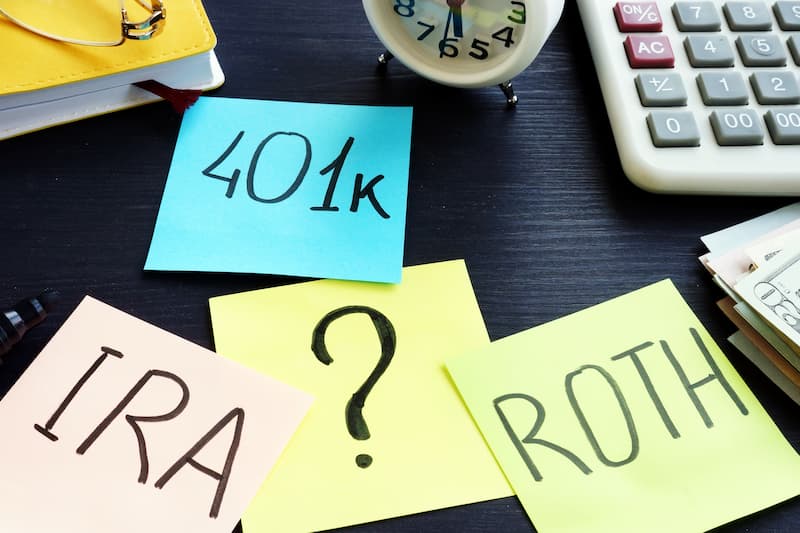As retirement age looms, it’s not uncommon for individuals to contemplate dipping into their nest eggs to tackle financial difficulties.
While it may seem like a viable solution, early withdrawals from retirement accounts such as 401(k)s and IRAs can lead to significant penalties and tax consequences.
Gaining a comprehensive understanding of the rules and regulations surrounding early withdrawals is paramount for making informed decisions about your retirement savings.
What Constitutes an Early Retirement Withdrawal?
An early retirement withdrawal, in the realm of personal finance, refers to extracting funds from a retirement account before reaching the age threshold of 59.5 years.
These premature distributions often come with penalties and tax implications, which vary depending on the specific retirement account involved.
For instance, traditional IRAs generally impose a 10 percent penalty on early withdrawals.
However, certain exemptions may apply, such as the provisions under the CARES Act.
This legislation temporarily waived the 10 percent penalty for qualifying individuals affected by the COVID-19 pandemic, allowing them to access their retirement savings with more flexibility during that challenging period.
In contrast, Roth IRA contributions—made using after-tax dollars—can be withdrawn at any time without incurring penalties or taxes.
However, withdrawing earnings before reaching age 59.5 usually triggers both tax and penalty consequences.
With 401(k) plans, the rules governing early withdrawals are more stringent, with a 10 percent penalty almost always levied on distributions made prior to age 59.5.
It’s important to note that employers may restrict access to the full balance of a retirement account if an employee isn’t fully vested. Additionally, bureaucratic snags, such as delayed or misplaced paperwork, can lead to prolonged waiting periods, possibly stretching to several weeks, before receiving the withdrawn funds.
During volatile economic periods like the COVID-19 pandemic, the value of retirement accounts may decline, only to rebound as the economy recovers.
Therefore, it’s crucial to consider the potential long-term implications of early withdrawals. Also, remember to set aside a percentage for taxes when withdrawing funds, or you might face a hefty tax bill when filing your annual returns.
When it comes to Roth IRAs, the rules are slightly different.
Contributions made with after-tax dollars and already taxed can be withdrawn tax-free at any age. However, withdrawing earnings may result in taxes and penalties.
In certain situations, such as covering qualified higher education expenses or unreimbursed medical expenses, utilizing a Roth IRA as an emergency fund could be a viable strategy.
In a nutshell, early retirement withdrawals involve tapping into retirement accounts before the age of 59.5, potentially incurring penalties and tax liabilities.

How the Early Withdrawal Penalty Applies to Different Retirement Accounts
Although the Internal Revenue Service (IRS) generally imposes a 10% additional tax on early withdrawals from retirement accounts, some notable distinctions exist between 401(k) plans and Individual Retirement Accounts (IRAs).
Early Withdrawals from 401(k) Plans
401(k) plans, employer-sponsored retirement vehicles, enable employees to save for their golden years via tax-deferred contributions.
Tapping into a traditional 401(k) plan ahead of time will trigger a 10% penalty, and you’ll also owe income tax. For instance, if you opt to withdraw $25,000 before reaching the designated retirement age, Uncle Sam will claim 10%, leaving you with a reduced $22,500.
Nonetheless, you’ll still be on the hook for taxes on that amount, even if you proceed with a penalty-free withdrawal.
Certain exemptions to the early withdrawal penalty exist for 401(k) plans, such as medical expenses, home buying costs, tuition fees, and expenses aimed at preventing foreclosure or eviction.
Keep in mind that these exemptions come with specific requirements and constraints, so consulting a financial advisor or tax professional is a prudent move before making any withdrawals.
Suppose you work for four years and receive 30% of your employer’s contributions. In that case, the IRS takes 10% of $16,250, or $1,625, and shrinks the effective net value of your withdrawal to $14,625.
To steer clear of 401(k) withdrawal penalties, mull over borrowing from your 401(k) or leveraging your individual retirement account (IRA).
Having a Roth 401(k) allows you to withdraw contributions at any time sans penalties.
Early Withdrawals from Traditional and Roth IRAs
Much like 401(k) plans, traditional and Roth IRAs impose a 10% penalty on early withdrawals.
However, exceptions do exist, such as using IRA funds to cover medical insurance premiums.
The 10% additional tax doesn’t apply to rollovers between IRAs.
Exemptions to the early withdrawal penalty for IRAs also exist.
Early distributions from traditional and Roth IRAs—including those made to a beneficiary or estate following the IRA owner’s demise, distributions made due to total and permanent disability, and qualified birth or adoption distributions—are exempt from the 10% additional tax.
As with 401(k) plans, it’s essential to understand the specific requirements and limitations tied to these exemptions, so seeking advice from a financial advisor or tax professional is highly recommended.
Report the 10% additional tax on Form 5329 (Additional Taxes on Qualified Plans, Including IRAs, and Other Tax-Favored Accounts) and Schedule 2 (Form 1040), Additional Taxes.
You may need to make estimated tax payments if you opt not to withhold.
Before dipping into your 401(k) or IRA, weigh all your options and consider the potential tax implications.
Exceptions to the Early Withdrawal Penalty
The most prevalent exception applies to individuals aged 59 ½ and above who may safely access their retirement funds without incurring penalties.
Beyond this age-based provision, additional exceptions accommodate specific circumstances.
For instance, seniors facing medical expenses exceeding 10% of their adjusted gross income can access their retirement funds without penalties. Moreover, if a senior suffers a disabling condition rendering them unable to work, they may opt for penalty-free withdrawals from their retirement account.
Certain professions, such as federal law enforcement officers, customs and border protection officers, firefighters, and air traffic controllers aged 50 and over, may also benefit from a tax break on IRA distributions, avoiding the 10% additional tax on early withdrawals from their retirement accounts.
Exceptions to the 10 Percent Early Withdrawal Penalty
Delving into the specifics of IRA and retirement plan distributions, various exceptions negate the 10% early withdrawal penalty.
For example, seniors requiring funds for qualified higher education expenses can withdraw money from their IRA or retirement plan without penalties.
First-time homebuyers can also access a penalty-free distribution of up to $10,000 from their IRA or retirement plan.
Additional exceptions to the 10% early withdrawal penalty encompass distributions due to an IRS levy, distributions for medical expenses surpassing 7.5% of adjusted gross income, and distributions for health insurance premiums during unemployment.
Furthermore, the 10% additional tax on early withdrawals from a traditional or Roth IRA is waived for specific distributions, such as those to a beneficiary or estate upon the IRA owner’s death, distributions resulting from total and permanent disability, and qualified adoption or birth distributions.
Exceptions to the 25 Percent Penalty for Early Withdrawals from Retirement Plans
While a 25% penalty may apply to early withdrawals from certain retirement plans, like the 457(b) plan, exceptions still exist.
For instance, seniors needing to withdraw funds from their retirement plan for a domestic relations order can do so without incurring the 25% penalty. Likewise, seniors facing an IRS levy may take a penalty-free distribution from their retirement plan.
It’s worth noting that estimated tax payments might be necessary if federal income tax isn’t withheld from IRA distributions.
To report the 10% additional tax, seniors must utilize Form 5329 and Schedule 2 (Form 1040), Additional Taxes, unless their Form 1099-R displays a distribution code 1 in Box 7.

Tax Consequences of Early Withdrawals from Retirement Accounts
Tapping into these nest eggs ahead of schedule can lead to hefty penalties and increased tax burdens, which may significantly impact your financial landscape.
Tax Consequences of Early Withdrawals from 401(k) Plans
Cashing out a 401(k) plan before reaching 59.5 years of age typically triggers a 10% early withdrawal penalty.
Furthermore, the amount withdrawn is subject to income tax, potentially catapulting you into a higher tax bracket for the year.
One method to bypass the 10% penalty involves opting for “substantially equal periodic” payments from your 401(k).
However, it’s crucial to assess the suitability of this approach based on your individual circumstances.
Hardship withdrawals offer another avenue to access 401(k) funds sans penalty.
To qualify, you must exhibit an immediate and pressing financial need, such as exorbitant medical bills, college tuition, funeral costs, or urgent home repairs.
Keep in mind, income taxes still apply, and specific situations may incur a 10% penalty.
Tax Consequences of Early Withdrawals from Traditional IRAs
Much like 401(k) plans, dipping into a traditional IRA before turning 59.5 years old incurs a 10% early withdrawal penalty.
The withdrawn sum is also subject to income tax, potentially nudging you into a steeper tax bracket.
Under particular circumstances, penalty-free withdrawals from your traditional IRA may be possible.
For instance, if the funds cover qualified medical expenses, higher education costs, or specific home repairs, the 10% early withdrawal penalty may be waived.
Nevertheless, income tax remains applicable to the withdrawn amount.
Tax Consequences of Early Withdrawals from Roth IRAs
For Roth IRAs, premature withdrawals made before 59.5 years of age also attract a 10% penalty.
However, unlike traditional IRAs, the withdrawn amount escapes income tax liability if the account has been in existence for a minimum of five years.
The Secure 2.0 Act permits up to $1,000 in annual withdrawals, repayable within three years.
This option furnishes temporary financial respite while mitigating some tax repercussions linked to early withdrawals.
Strategies to Avoid Early Withdrawals and Penalties
By implementing the following strategies, seniors can protect their long-term financial goals and ensure a secure retirement.
Create an Emergency Fund
Establishing a robust emergency fund is paramount for seniors looking to stave off early withdrawals from retirement accounts.
This fund, earmarked for unforeseen expenses like medical emergencies or urgent home repairs, offers a financial safety net.
Instead of placing these funds in a low-yield checking account, opting for a high-yield savings account maximizes interest earnings and safeguards retirement savings.
Evaluate Your Credit Card Options
For seniors boasting a solid credit rating, obtaining a new credit card with a zero percent introductory rate may be a viable alternative.
Tapping into this credit option allows for immediate financing of emergencies or conserving cash reserves. Consequently, this strategy eliminates the need for premature retirement account withdrawals and preserves long-term financial stability.
Reach Out to Other Sources for Help
Financial support can often be found in various community resources.
Seniors may find assistance through friends, food banks, charitable organizations, or religious institutions.
By leveraging these resources, seniors can avert early withdrawals from retirement accounts, ensuring a more secure financial future.
Consider a Home Equity Loan or Line of Credit
A home equity loan or line of credit presents another option for seniors in need of emergency cash.
Functioning similarly to a credit card, this loan type offers a lower interest rate and includes an additional mortgage payment. However, stringent conditions and a maximum loan amount of $50,000 apply.
Seniors must make repayments at least quarterly, or the loan will be classified as an early distribution.
Understand the Exceptions to Early Withdrawal Penalties
Certain circumstances allow for penalty-free withdrawals from 401(k) or IRA accounts.
For instance, first-time homebuyers can access up to $10,000 from their IRA without penalty to fund a down payment. Moreover, unreimbursed medical expenses exceeding 10% of an individual’s adjusted gross income qualify for penalty-free withdrawals.
Grasping these exceptions empowers seniors to make informed decisions regarding the use of their retirement funds.
Consider a Deferred Annuity
Seniors aged 55 or older might explore rolling over an old 401(k) into a deferred annuity with an inflation-adjusted income rider.
This strategic move allows for penalty-free access to funds, providing an additional layer of financial security during retirement years.
Disaster Relief Exceptions
In declared disaster zones, seniors may be eligible to utilize retirement funds for recovery efforts without early withdrawal penalties.
This exception proves invaluable in times of crisis, enabling seniors to maintain their quality of life while rebuilding after a disaster.

Navigating Early Withdrawals in Special Circumstances: Rule of 55 and SEPP
To guide you through this process, we’ll delve into two essential strategies for penalty-free early withdrawals: the Rule of 55 and Substantially Equal Periodic Payments (SEPPs).
The Rule of 55
The Rule of 55, a lesser-known provision, grants individuals aged 55 or older the ability to access funds in their employer-sponsored, tax-deferred retirement plans, such as 401(k)s and 403(b)s, without facing the dreaded 10% early withdrawal penalty.
Keep in mind, though, income tax must still be paid on the withdrawals.
However, the Rule of 55 comes with a catch: it only applies if you leave your job after turning 55 or during the calendar year you reach that age.
For those still employed, the early withdrawal penalty remains in place.
It’s crucial to remember that the Rule of 55 is only applicable to the 401(k) or 403(b) plan of the employer from which you separate service.
If you’ve accumulated multiple 401(k)s from previous employers, the Rule of 55 can only be used for the most recent employer’s plan.
Traditional IRAs, unfortunately, aren’t eligible for penalty-free withdrawals under the Rule of 55.
Before leveraging the Rule of 55, evaluate its impact on your retirement savings’ overall growth trajectory.
In some cases, it might be more prudent to let your 401(k) remain with your employer to maximize growth or roll it over to an IRA.
Substantially Equal Periodic Payments (SEPPs)
SEPPs offer an alternative means of withdrawing funds from retirement accounts sans penalties.
This method stipulates that you take substantially equal, annual or monthly withdrawals for five consecutive years or until you turn 59.5 – whichever comes later.
The withdrawal amount hinges on your life expectancy and account balance.
However, SEPPs come with a major caveat: once initiated, they cannot be altered or halted until the end of the five-year period or until you reach 59.5 – whichever comes later.
While this rigidity may dissuade some, SEPPs can be invaluable for those with specific income needs during early retirement.
Roth 401(k)s
Roth 401(k) contributions present a unique advantage: the ability to withdraw them tax-free and penalty-free at any time, regardless of age.
However, earnings on those contributions remain subject to taxes and penalties if withdrawn before age 59.5 and not under a special circumstance, such as disability or death.
When contemplating Roth 401(k) withdrawals, don’t forget to weigh the tax implications against those of taxable account withdrawals.
Roth 401(k) withdrawals are generally tax-free, while taxable account withdrawals may be subject to capital gains taxes depending on the investments and holding periods.
Summing It Up
Navigating retirement and early withdrawals can seem daunting, but understanding the rules is essential for making the best decisions for your financial future.
Remember, clear and simple information is key to managing your retirement savings effectively.
To make the most of your golden years, consider discussing your options with a trusted financial advisor who can help you with personalized advice.
In the meantime, focus on what matters most to you – whether it’s spending time with family, exploring new hobbies, or traveling the world.
When it comes to managing your retirement finances, always keep your needs and goals in mind, and don’t shy away from seeking expert advice.
With a little help and guidance, you can make informed decisions and enjoy your retirement to the fullest.










